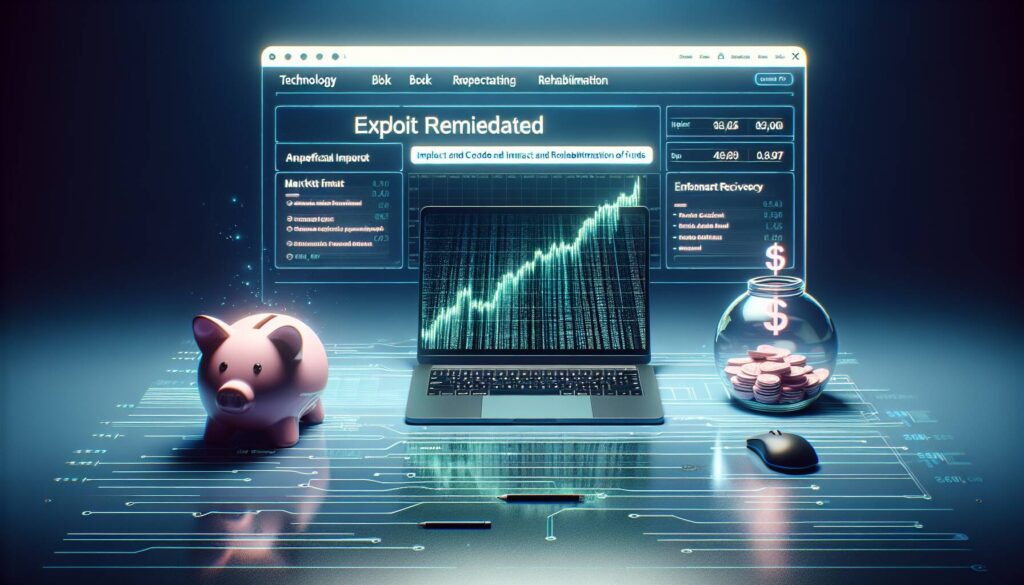In a surprising twist within the cryptocurrency landscape, the attacker responsible for draining over $40 million from GMX’s V1 contracts has begun returning the stolen funds, indicating an acceptance of the project’s offered white-hat bounty of $5 million. This development first emerged through an on-chain message from the attacker that simply stated, “ok, funds will be returned later.” Hours subsequent to this announcement, a significant amount of over $10.5 million in FRAX was sent back to GMX’s deployer wallet, as flagged by security firm PeckShield.
The repayment appears to be just the beginning, with reports indicating that more funds are expected to follow. Following the incident, GMX’s token price saw a notable increase, trading at $13.15, reflecting a 13% rise over the past 24 hours, as investors responded positively to the news of returning assets. Additionally, Lookonchain reported the return of over $40 million in various tokens to the GMX Security Committee MultiSig address, underscoring the extent of the compromised funds.
This breach ranks as one of the largest decentralized finance (DeFi) exploits of the year, primarily affecting GMX’s GLP pool on the Arbitrum network. The attacker capitalized on a re-entrancy flaw in the OrderBook contract, enabling manipulation of Bitcoin short positions and inflating GLP’s valuation, which was ultimately redeemed for substantial profits across multiple tokens, including USDC, WBTC, WETH, and FRAX.
As part of their response to this significant breach, GMX took swift action by halting V1 trading and minting activities across both Arbitrum and Avalanche networks. In an effort to reclaim the stolen funds, GMX launched a bug bounty program, promising more than 10% of the stolen amount for the safe return of the assets and guaranteeing that no legal action would be taken if the full amount was restored within 48 hours. This proactive approach appears to have led to the hacker’s compliance, with the returns marking a unique case in the ongoing saga of DeFi security challenges.

GMX Exploit and Fund Recovery
Key points on the recent $40 million exploit of GMX’s V1 contracts and the subsequent return of funds:
- Major Exploit: The attacker drained over $40 million from GMX’s V1 contracts, targeting the GLP pool on Arbitrum.
- Return of Funds: The attacker began returning funds, sending back over $10.5 million in FRAX shortly after an on-chain message indicated intention to return the funds.
- White-Hat Bounty: GMX offered a $5 million bounty for the return of stolen funds, which the attacker seems to have accepted.
- Market Impact: GMX’s token price rose by 13% to $13.15 following news of the fund returns, showing market confidence restoration.
- Identified Vulnerability: The exploit was caused by a re-entrancy flaw in the OrderBook contract, allowing manipulation of positions and inflated asset valuation.
- Immediate Response: GMX halted V1 trading and minting on both Arbitrum and Avalanche as a security measure.
- Potential Consequences: The breach highlighted vulnerabilities in DeFi protocols, raising awareness of security issues among users and developers.
The incident emphasizes the need for robust security measures in DeFi, which can have significant implications for how users interact with these platforms and manage their investments.
GMX Gives a Run for Its Money: The Dynamics of DeFi Exploits and Recovery
The recent incident with GMX, where an attacker siphoned over $40 million from its V1 contracts before starting to return funds, highlights the vulnerabilities within decentralized finance (DeFi) spaces. This exploit, marked as one of the year’s most significant breaches, not only emphasizes the precarious nature of DeFi protocols but also reflects the effectiveness of incentivizing remorse through white-hat bounties. The attacker’s decision to return a substantial portion supports the notion that financial ethics can still play a role amidst the chaos of digital theft.
When comparing this event to similar past incidents in the DeFi world, such as the Poly Network hack, there are notable competitive advantages and disadvantages at play. GMX’s quick response to halt trading and minting demonstrates a proactive approach that could mitigate further damage—a strategy not universally adopted in high-profile hacks, where platforms often delay reactions, leading to larger financial repercussions. The rapid recovery of a significant portion of stolen funds also places GMX in a positive light, potentially restoring user trust quicker than those protocols that did not offer robust recovery options.
However, the reality of needing a white-hat bounty and the breach itself casts a long shadow on GMX’s security protocols. While the recovery is commendable, it raises questions about the underlying vulnerabilities that led to such a breach. Unlike projects that have built more resilient frameworks, GMX’s immediate recovery might not fully deter future attacks, leaving the door open for adversaries seeking similar exploitative advantages.
This situation could serve as a double-edged sword for GMX: while the return of funds can attract user confidence and trading activity—evidenced by the 13% price rise—it could also provoke scrutiny from security analysts and potential investors aware of the inherent risks. Those savvy in crypto operations might view the exploit as a signal to be cautious, aligning themselves with platforms boasting stronger security measures. Conversely, for those engaged in the risk-tolerant spectrum of DeFi investments, this incident might validate the high-risk, high-reward nature of the ecosystem they inhabit.
Ultimately, the GMX case could benefit tech-forward investors looking to capitalize on restored confidence, while simultaneously posing challenges for risk-averse individuals who are wary of future exploits in the volatile DeFi landscape. The overarching narrative continues to evolve, as stakeholders navigate the fine line between innovation and security in an increasingly complex digital finance arena.

















